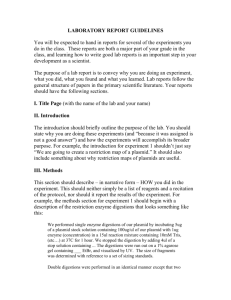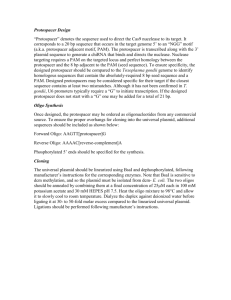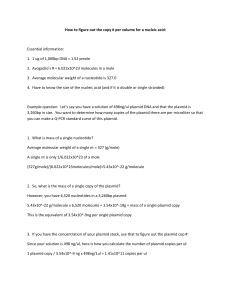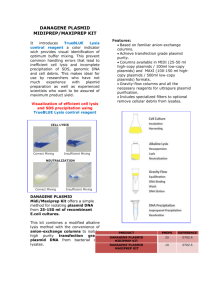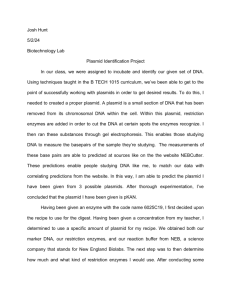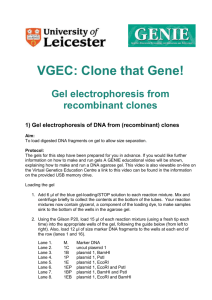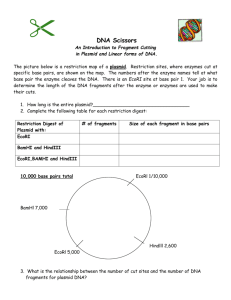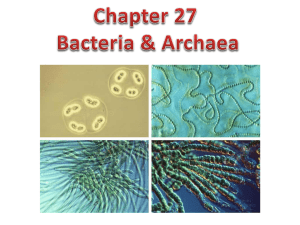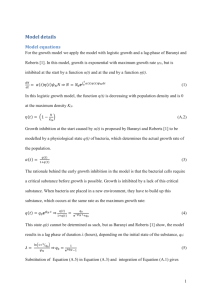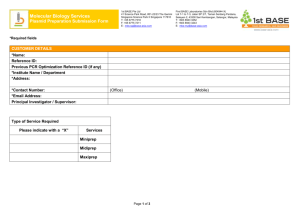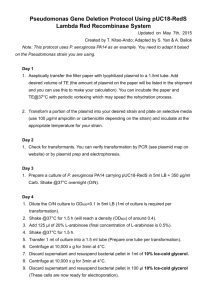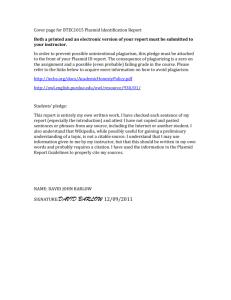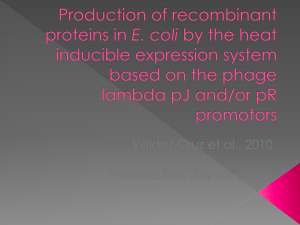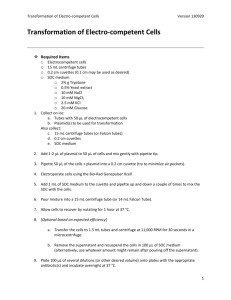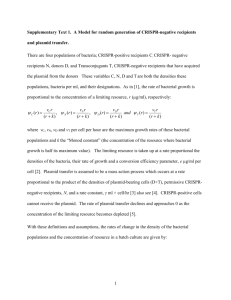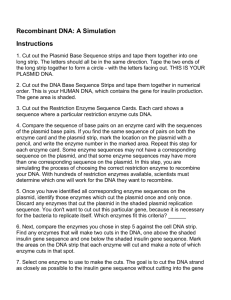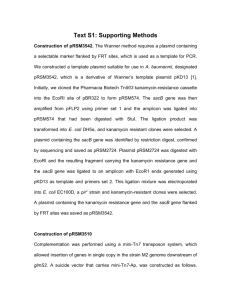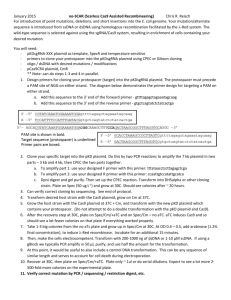VGCE: Clone that Gene!
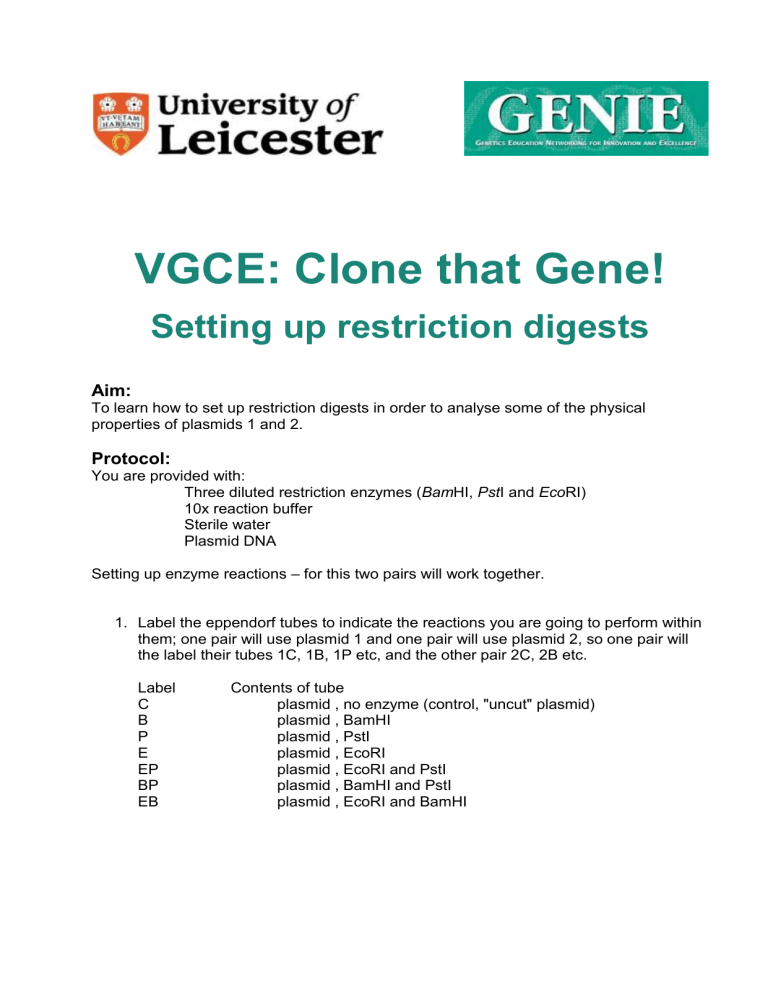
VGCE: Clone that Gene!
Setting up restriction digests
Aim:
To learn how to set up restriction digests in order to analyse some of the physical properties of plasmids 1 and 2.
Protocol:
You are provided with:
Three diluted restriction enzymes (
10x reaction buffer
Bam HI, Pst I and Eco RI)
Sterile water
Plasmid DNA
Setting up enzyme reactions – for this two pairs will work together.
1. Label the eppendorf tubes to indicate the reactions you are going to perform within them; one pair will use plasmid 1 and one pair will use plasmid 2, so one pair will the label their tubes 1C, 1B, 1P etc, and the other pair 2C, 2B etc.
Label
C
Contents of tube plasmid , no enzyme (control, "uncut" plasmid)
B
P
E
EP
BP
EB plasmid , BamHI plasmid , PstI plasmid , EcoRI plasmid , EcoRI and PstI plasmid , BamHI and PstI plasmid , EcoRI and BamHI
2. Using a P20 Gilson adjustable pipette and a fresh tip for each component added, set up reaction mixtures as follows (all volumes in microlitres, µl):
Control Digests with one Digests with two
(no enzyme)
(C) enzyme enzymes water 18 9 0
10x buffer
Plasmid DNA
3
9
3
9
3
9
Enzyme(s)
Total Volume
0
30
9
30
9 + 9*
30
3. Mix tube contents thoroughly by flicking or by pipetting up and down with a Gilson
P20. Use a fresh tip . Avoid creating a foam as this can denature (inactivate) enzymes. Shake or centrifuge the contents to bottom of tube if they have dispersed up the walls.
4. Close the tubes and insert into a polystyrene "floater" in the water bath. Remember what your floater looks like so that you will recognise your samples later!
5.
Incubate at 37 °C in the water bath for at least 60-90 min.
Virtual Genetics Education Centre: http://www.le.ac.uk/ge/genie/vgec/index.html


